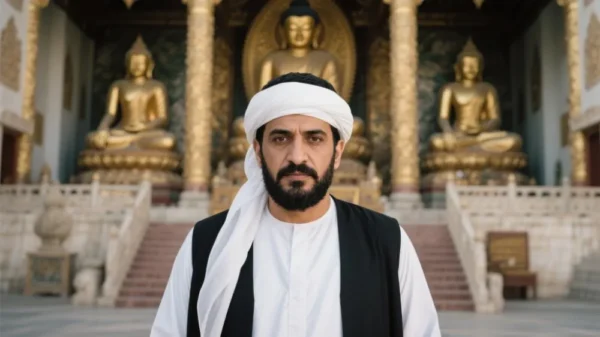What to Wear to a Buddhist Funeral: A Guide to Respectful Attire and Deeper Meaning
Attending a Buddhist funeral is not only a gesture of respect for the deceased but also an opportunity to reflect on impermanence and the cycle of life. Clothing choices play a significant role in honoring Buddhist traditions and embodying mindfulness. Here’s a thoughtful guide to appropriate attire and the deeper philosophy behind it.

1. Colors: Simplicity as a Mirror of Impermanence
In Buddhist cultures, white and black are the most common colors for funeral attire. White symbolizes purity and the transient nature of life, while black represents solemnity and mourning63. In countries like Japan and Thailand, black is traditionally preferred, whereas in China and Korea, white dominates6. Avoid bright colors like red, which symbolize joy and prosperity in many Asian cultures, as they clash with the somber atmosphere34. Deep grays or navy blues are acceptable alternatives, provided they are muted and unobtrusive.
This emphasis on simplicity mirrors Buddhist teachings on detachment and the impermanence of material existence. By dressing plainly, attendees acknowledge the fleeting nature of life and cultivate humility.
2. Modesty and Formality: Aligning with Mindfulness
Buddhist funerals prioritize modesty. Covered shoulders, knees, and décolletage are essential for both men and women36. Men may opt for dark suits or traditional attire like a white shirt and black trousers, while women should choose conservative dresses, skirts, or pantsuits. Avoid casual wear like jeans, shorts, or graphic tees, which can appear disrespectful3.
The focus on modesty extends beyond appearance—it reflects the Buddhist principle of Right Action (part of the Eightfold Path), encouraging intentional behavior that respects others and reduces suffering2.
3. Cultural Nuances: Respecting Regional Traditions
Buddhist practices vary widely. For example:
In Tibetan Buddhist ceremonies, mourners might wear traditional robes or scarves (khatas) as a sign of reverence1.
In Theravada communities (e.g., Sri Lanka or Thailand), attendees often wear white to symbolize purity and the hope for a favorable rebirth6.
Mahayana traditions in East Asia may incorporate elements like subdued colors and minimal jewelry10.
Researching local customs or consulting with the family ensures alignment with cultural expectations.
4. Accessories and Grooming: Avoiding Distraction
Minimalism extends to accessories. Avoid flashy jewelry, heavy makeup, or strong perfumes, which distract from the reflective atmosphere36. Shoes should be clean and unobtrusive; in some temples, attendees may need to remove them entirely7.
This restraint aligns with the Buddhist virtue of non-attachment—letting go of vanity to focus on compassion and the present moment.
5. The Deeper Purpose: Clothing as a Practice of Compassion
Buddhist funeral attire is more than a dress code; it’s a meditation on interconnectedness. By dressing mindfully, mourners honor the deceased’s journey through samsara (the cycle of rebirth) and generate positive karma through acts of respect26. The clothing becomes a silent offering, reflecting the belief that every action—even sartorial choices—shapes one’s spiritual path.
Final Thoughts
Choosing funeral attire in a Buddhist context is an act of reverence and wisdom. It bridges cultural traditions, personal mindfulness, and the universal truth of impermanence. As the Buddha taught, “All conditioned things are transient; work diligently for your liberation.” By dressing with intention, we honor both the departed and our shared journey toward awakening.



